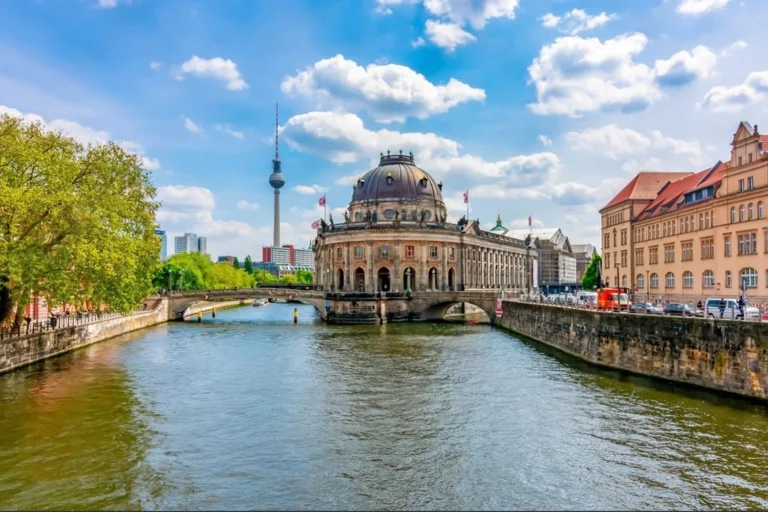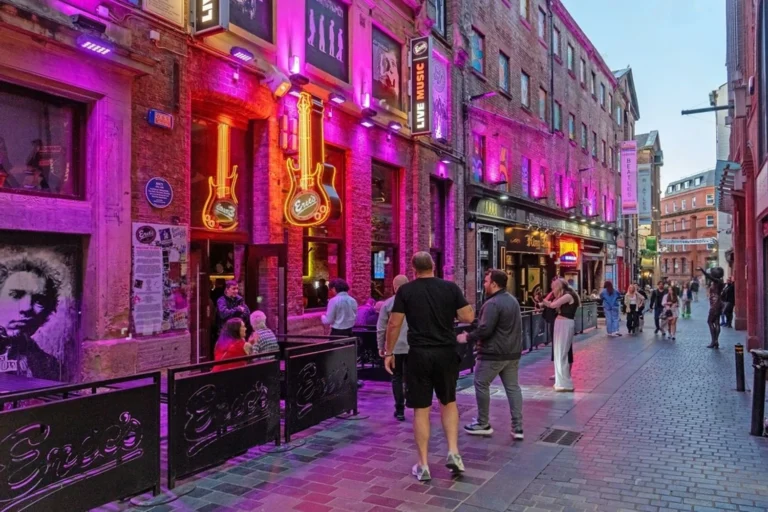Guatemala: 30 Strange and Beautiful Facts Beyond the Volcanoes
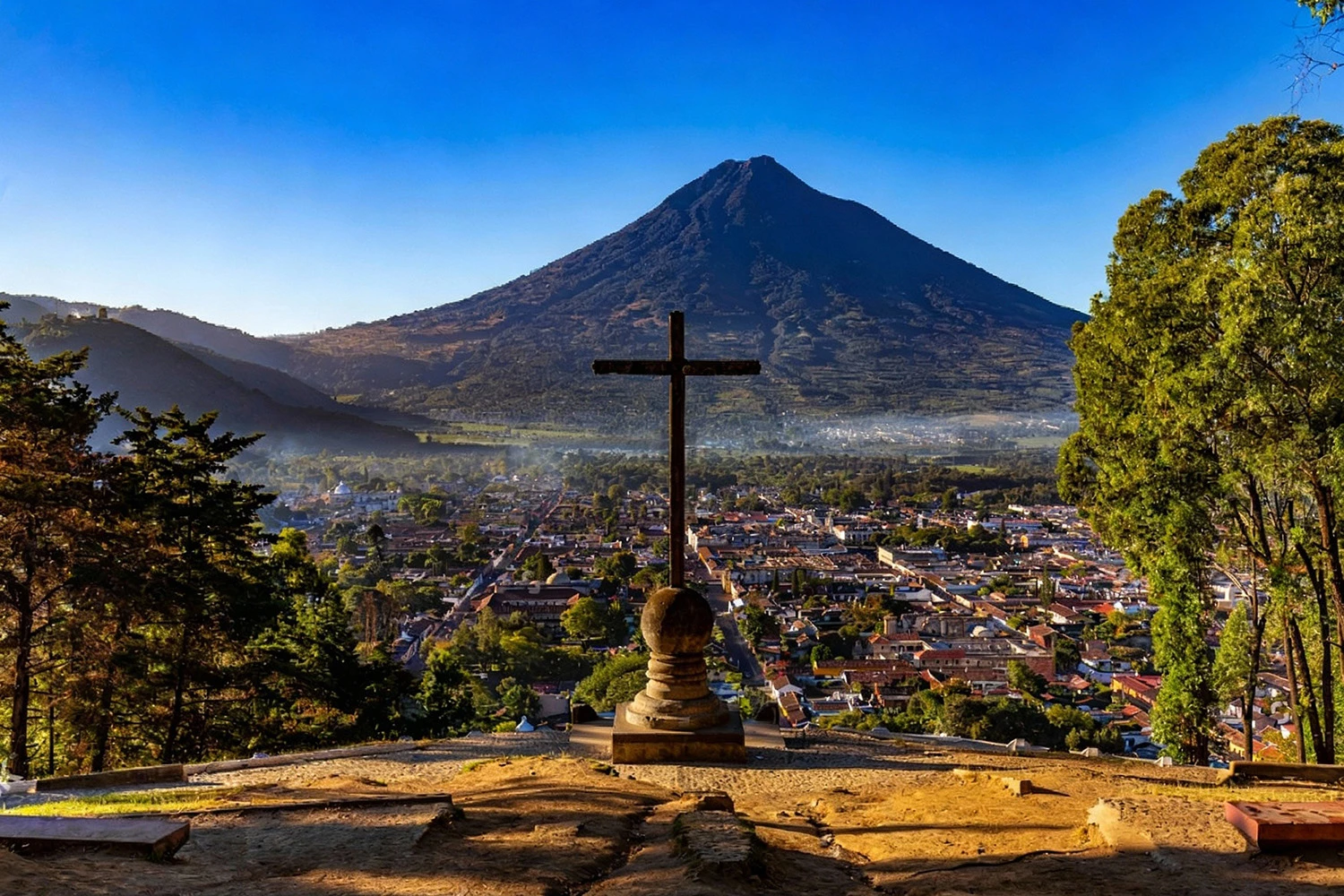
Guatemala feels like a story written in color – the deep greens of its hills, the smoke curling from morning fires, the rhythm of footsteps on cobbled streets. There’s a softness beneath its energy, as if the land itself remembers everything and still hums it back in quiet tones. The scent of coffee, the flicker of candles, the warmth of a stranger’s smile – they all blend into something timeless. Stay a while, and you’ll sense it too: Guatemala doesn’t just show you its beauty, it lets you feel its heartbeat.
Land of Many Trees, truer than it sounds
Funny how a name can fit so perfectly. Guatemala comes from the Nahuatl word Quauhtemallan – “Land of Many Trees” – and it still feels like someone named it with their hand on their heart. It sounds like a boast at first, but the longer you sit with it, the more it feels like a simple, honest description.
From above, the place is so lush that satellites once mistook the canopy for clouds, which makes sense when you’re underneath it all. Shade pools in every direction, the air is damp and leaf scented, and the light arrives in thin slivers that dust your skin. I remember realizing the green wasn’t just around me; it was the atmosphere itself.
People say the jungle breathes here, and I believed it in the hush and rush of palms and the low, chest deep roar of howler monkeys rolling over the hills like distant thunder. There’s a hush after each call that settles in your ribs, and your own breathing falls into step – as if the name of the country isn’t just history, but a living rhythm you can hear.
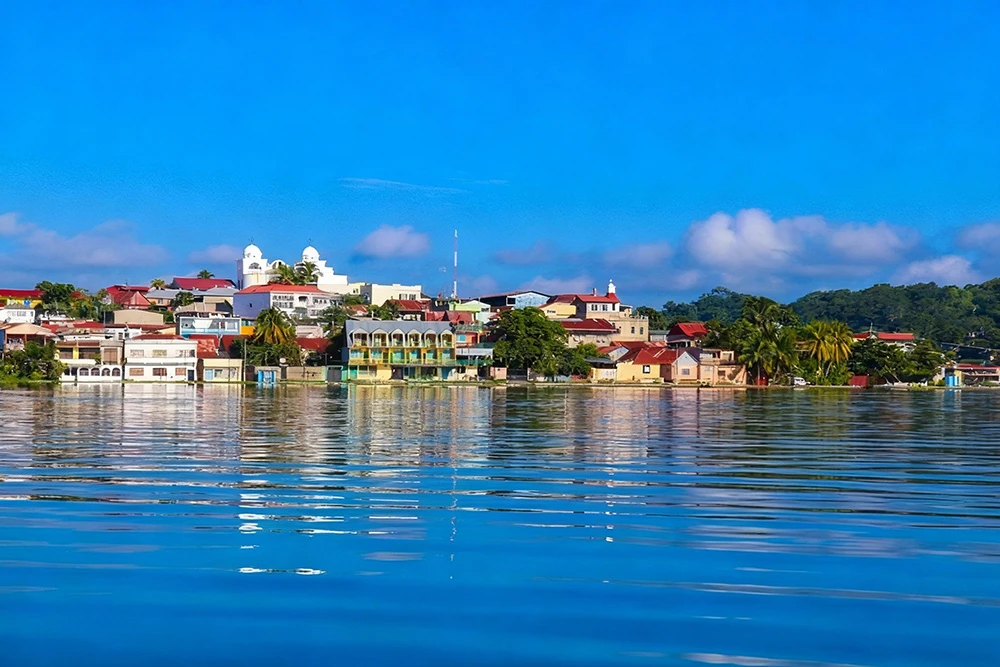
Where the first chocolate bar began as sacred drink
It still amazes me that the chocolate bar we unwrap today began as a holy brew. To the ancient Maya, cacao wasn’t a treat to snack on; it was something you offered to the gods, a prayer you could taste. The drink was dark and foamy, thickened with ground corn, sparked with chili, more potion than dessert. I imagine the scent earthy, bitter, a little smoky rising from a clay cup, and there’s a hush in it, the kind you feel before a story starts.
In Guatemala, you can sense how sweetness learned to carry weight. I remember tasting a chili kissed cacao and feeling this little drumbeat in my chest, as if the drink knew where it came from. Chocolate stops being candy and becomes a doorway: celebration, comfort, a bit of courage, all in one sip. It makes every modern bar feel like a quiet echo of that first devotion, a small inheritance we keep unwrapping.
Temples tuned to Venus long before café talk
What blows me away is how old the habit of looking up really is. Long before Paris learned to linger over tiny cups, astronomers here were charting the moods of Venus, waiting for it to slip into dawn like a bright secret. The air was thick with the green smell of the morning and birds fussing at first light, and I remember thinking the sky must have been their biggest clock.
In Tikal, the temples don’t just sit; they point. Each line of stone matches a moment in the heavens solstice sun, equinox shadow, the precise reappearance of Venus as if the buildings were tuned to the stars. Their grasp of the sky rivaled the Greeks and Egyptians, which feels wild to admit when you’re staring at leaf laced ruins and hearing cicadas hum. It leaves you a little humbled, realizing how much of human brilliance is simply paying attention, and how wonder, not fashion, is the thing that endures.
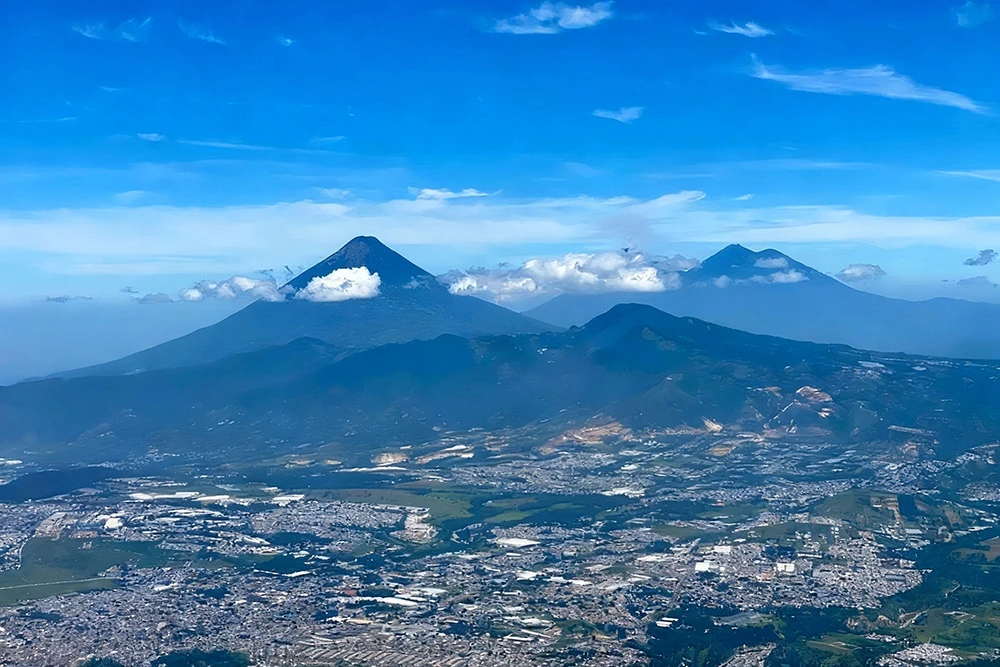
Maya Blue, the color time forgot to fade
I can still picture that impossible shade, glowing where the jungle swallows almost everything. The air was steamed with rain and cicadas, and there it was a quiet band of blue on old stone, like sky trapped in rock. They say it’s only indigo blended with clay, yet it stands there unfazed by centuries of humidity and storms, a calm pulse of color that outlived the vines around Bonampak.
What gets me is how no one can quite remake it. Scientists come close, then the recipe slips away again, a stubborn memory that refuses to leave its secret. There’s something beautiful about that this small, enduring blue carrying the patience of a people and a place, reminding me that not everything precious wants to be fully understood, only witnessed and respected when it decides to shine.
Where jungle and ancient temples share the same breath
I remember the air warm and resin scented, the canopy murmuring, and then that low roar howler monkeys sounding like distant thunder rolling through stone. It didn’t feel like ruins so much as a living threshold, sunlight snagging on limestone while the forest breathed around it.
Jaguars leave neat prints in damp paths, toucans flicker through the leaves with fruit bright beaks, and those temples older than Rome stand steady, watched by vines and sky. Time seems to loosen there; the day forgets its schedule and simply listens.
Someone told me it was the first place the world honored for both nature and culture, and in Tikal National Park that makes perfect sense. It feels like a handshake between worlds stone and canopy sharing the same breath, each one giving the other a heartbeat.
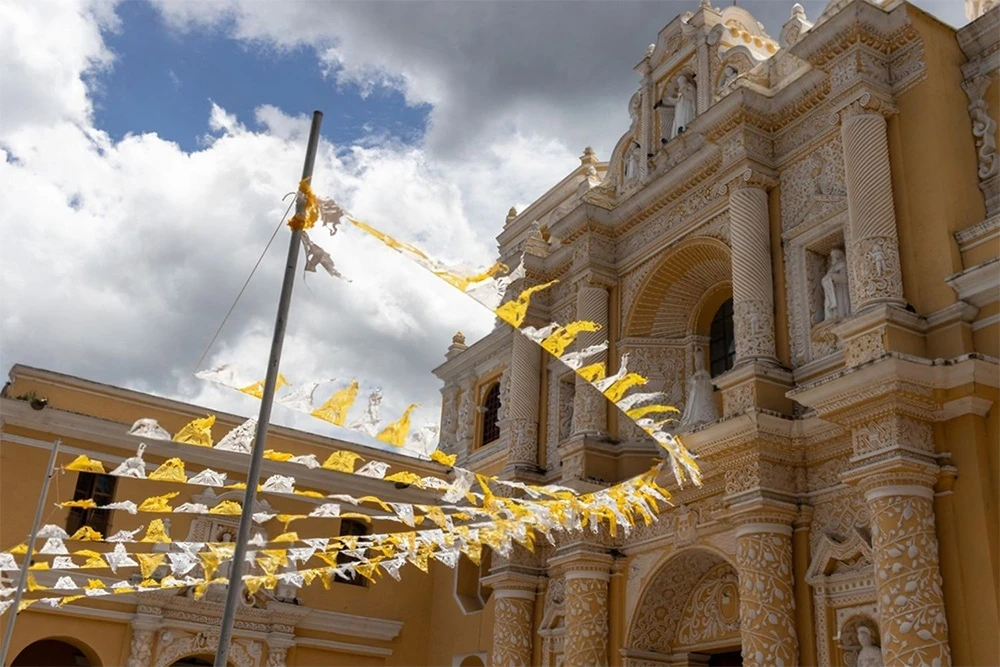
Chaac’s flash, reminding who first ruled this land.
I didn’t expect the sky to be so blunt. One second the air was warm and sweet with wet leaves, the next a white vein tore across the clouds and everything held its breath, even the cicadas. Thunder followed like a drum rolling through the ribs, rain hammered hard, then let go just as quickly, leaving the smell of earth and resin floating back into the trees.
People in Petén just shrug at that kind of drama and say it’s Chaac, reminding everyone who first ruled here. I love that mix of reverence and practicality – divine temper or tropical weather, no one’s quite sure, and maybe that uncertainty is the point. The storm vanishes and the night settles again, and you’re left a little quieter, feeling how the old stories still move through the same sky we do.
https://en.wikipedia.org/wiki/Guatemala
A country that hums beneath your feet
Sometimes you feel a sound before you hear it. In Antigua, I remember my coffee trembling a little while the ground gave a gentle murmur, like a cat purring under the floorboards. Fuego sits there in the distance, one of the world’s most restless volcanoes, and locals smile a little when it rumbles; they say it’s an old spirit guarding the highlands. You catch the faint scent of ash after dawn, grit on the windowsill, and you realize the land isn’t quiet at all it’s just speaking in a low, steady voice.
People still talk about the day noon went dark in 2018, when the light thinned and the air grew heavy. The birds fell silent, church bells sounded softer, and time felt strange, stretched and fragile. It’s frightening to live with a neighbor like that, and yet there’s a calm bravery in it too a daily tenderness for small things, for clear mornings and clean lungs and the simple comfort of laughter drifting down the street. That hum under everything is a reminder that the earth is alive and we are guests, lucky to be listening.

Beauty above, whispers of a sunken city below
Some places make you lower your voice without quite knowing why. Here the volcanoes stand like old guardians, shoulders dark against a soft blue morning, and the air smells faintly of pine and woodsmoke. When someone quoted Huxley calling it “the most beautiful lake in the world,” I remember thinking it sounded less like praise and more like a confession.
The elders around the shore tell a story that sits in your chest: beneath the water lies an ancient Maya city, swallowed by earthquakes. That thought changes the surface somehow; when the breeze pauses, the lake turns still, and the quiet feels deeper. They say if you swim far enough down, the water grows suddenly cold, as if your skin were brushing forgotten stone.
Maybe that’s the secret of Lake Atitlán: beauty so bright it almost startles you, and beneath it, a tenderness for what came before. I left with the sense that the place carries both shimmer and memory in the same breath, like a held note that refuses to fade. It’s the kind of wonder that doesn’t ask for proof, only a little respect and a slower heartbeat.
Tiny guardians that borrow your midnight storms
I didn’t expect comfort to be so small. A doll no taller than my thumb, wrapped in threads the color of bougainvillea and corn, sat warm in my hand; its tiny face seemed serious in the sweetest way. In Antigua, that seriousness made sense – the air carries wood smoke and fresh tortillas, and even the quiet feels patient.
They call them worry dolls, muñecas quitapenas. You tell them what keeps you awake, tuck the little figure under your pillow, and let the night do its work. By morning, the story goes, they shoulder your fears so you can lift your eyes to the day.
What surprised me most is how tender the idea is: relief arriving in miniature. It’s the spirit I kept finding there – bright threads, careful hands, a belief that burdens get lighter when shared. I woke with a lightness I couldn’t measure, just the sense that someone kept watch while I rested, and that was enough.

The saint who drinks, smokes, and listens anyway
I didn’t expect a saint with tobacco on his breath and a gloss of rum on his lips. They call him San Simón, or Maximón, and in a dim room heavy with candle wax and laughter soft murmurs, a wooden gentleman in silk scarves waits with a cigarette glowing like a small red eye. In Santiago Atitlán, people lean close and pour him a measure of rum, the air sweet and smoky, as if devotion could rise in curls and hang above him like a kind of halo.
What startled me wasn’t the ritual, but the honesty it allowed. The prayers weren’t polished they ran from sore knees and tangled love to work troubles and, quietly, revenge. I remember feeling a pang of recognition: here was a holy figure who doesn’t demand purity at the door. Part saint, part trickster, he makes room for our contradictions, the tender and the difficult set side by side, and the affection people have for him feels like gratitude for being seen without pretending.
Maybe that’s why he fits this landscape so well: a place of bright markets and shadowed corners, where life is vivid and complicated. Maximón seems to say that hope and hurt can sit at the same table, and still, something good might happen. I left thinking how rare it is to be welcomed exactly as you are like the lake holding both sunlight and deep blue depths, and not spilling a drop.
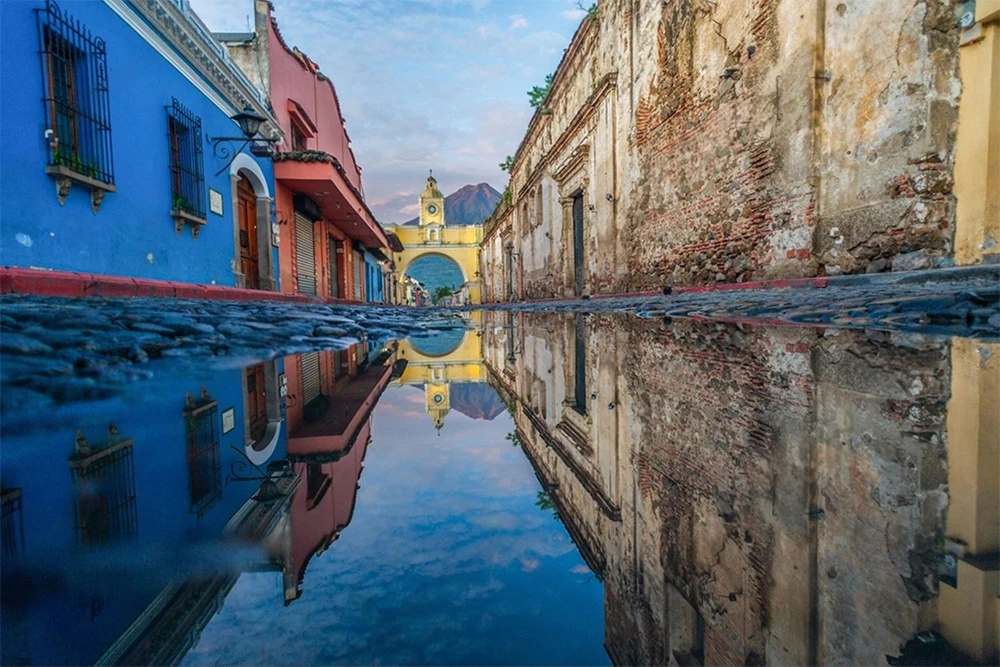
Sawdust carpets that bloom for only hours
I still think about the way color took over the stones how, for a few hours, the street felt softer than memory. In Antigua, Guatemala during Semana Santa, the alfombras appear like a quiet miracle: dyed sawdust and petals arranged into saints and quetzals, borders precise as lace. The air smells of incense and pine, and even the light seems tinted magenta, saffron, a shy green that clings to your sleeves.
What stays with me is the tenderness of making something meant to vanish. The processions come drums low, robes brushing edges and the patterns surrender under steady feet, a masterpiece offered up and unmade. It felt like a prayer laid flat on the earth: beauty arriving fully, then bowing out without regret. I remember walking away with nothing to hold but the afterglow and the smoke’s faint sweetness, and somehow that felt like faith.

Don’t whistle after dark: La Llorona listens
No one whistles after dark here. The air feels thinner, and the old warning sits right on your shoulder: if you send a tune into the night, La Llorona might answer. The Weeping Woman is said to walk the riverbanks, mourning the children she lost; a soft rustle of water, a chill under the door, and the wind seems like a messenger from the river.
People swear they’ve heard her, a distant cry carried over the rooftops of San Cristóbal de las Casas, moving through pine smoke while the dogs fall quiet. I remember holding my breath, not out of superstition so much as tenderness for the story an instinct to leave the night undisturbed, like someone grieving in the next room. It’s strange and beautiful how a place can teach you to listen, and how the highlands ask for quiet so sorrow can pass.
Giant kites carry our messages to the dead.
I never knew grief could look so bright. On November 1, the air fills with the soft rasp of paper and the sweetness of marigolds, and every color seems to lean toward the sky, as if remembering someone. It feels like the whole day is an inhale, waiting for the wind to answer.
In Sumpango and Santiago Sacatepéquez, they lift enormous circular kites some as big as houses straight from the cemetery, rising over petals and names etched in stone. The designs glow like stained glass moons when the light hits, all stitched from tissue and patience. I remember the low sigh of incense, the tug of breeze, and the way families laugh softly at the foot of the graves, as though laughter itself could keep a chair warm.
People say the kites reconnect us with the spirits, and I didn’t realize how much I wanted that to be true until the sky turned into a page full of color. It isn’t morbid; it’s a conversation kept open, a promise that love can fly farther than sadness. For a moment, the wind felt like a messenger, carrying every bright fragment to the ones we still miss.
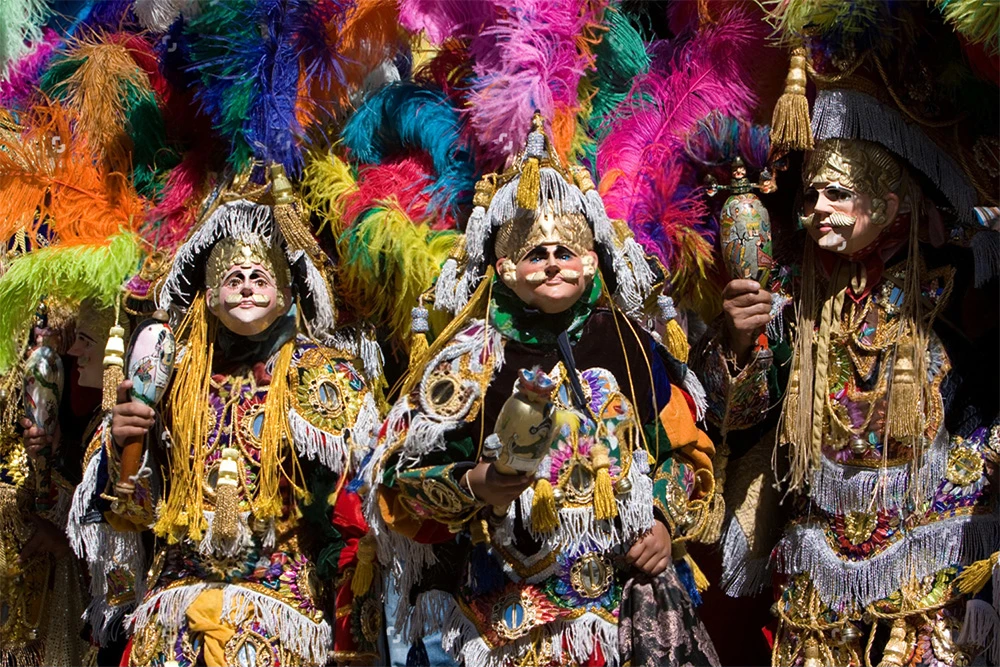
Pastel laws and volcanic pigments keep Antigua in tune
At first the colors feel effortless peaches, mint, and shy blues leaning over cobbled streets as bells drift through the afternoon. Then someone mentions the secret, and it clicks: every façade follows a government approved palette, a quiet pact to keep the colonial harmony intact. I remember smiling at how intentional it is, the way these walls agree to sing together like a choir keeping time, soft but unwavering.
And the paint itself carries a tougher story. Here in Antigua, they mix crushed volcanic rock into the pigment so the walls can withstand the earth’s moods. When you run a hand along the sun warmed plaster, it feels faintly sandy, with a mineral breath like dust after rain homes wearing armor made from the mountains that watch over them. It’s beautiful in a grounded way: color chosen with care, resilience built right into the shade, a city that holds its elegance steady even when the ground beneath it remembers to tremble.

When the Earth Sips Coffee, Everyone Just Smiles
The spoons chimed in their cups as the chandelier gave a small sway. A neat ring spread across the coffee, and someone raised an eyebrow, smiled, and said, “Ah, un temblorito.” No rush followed, only the warm smell of dark roast drifting around us.
Here in Guatemala, the ground sends gentle reminders, hundreds of them in a year. It feels less like danger and more like the earth clearing its throat before the conversation continues. People sip, nod, and a shared calm fills the space.
That ease stayed with me. I remember my first one the quick flutter in my chest, then the comfort of everyone staying present. It taught me a quiet kind of courage: keep the cup steady, breathe, and trust the moment to hold.
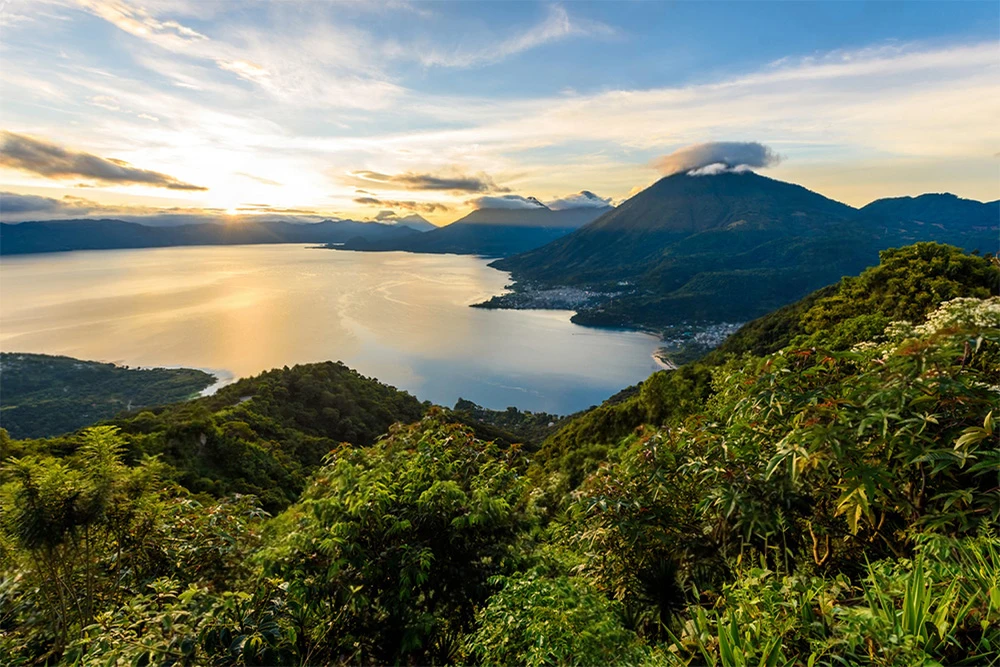
Jade, Guatemala’s other green gold after the storm
I still remember the weight of jade, cool against my palm. In Guatemala they call it the other green gold, and someone told me that after Hurricane Mitch in 1998 the hills split open and a long hidden mine near the river was exposed. Out came blue and lavender stones no one had seen in centuries the sky caught in stone. The fact sat with me all afternoon, equal parts awe and ache.
It felt like the land trying to begin again, beauty surfacing right through the scar. People spoke softly around those pieces; the air smelled of wet leaves and silt, and the stones stayed cool no matter the heat. There was a quiet mix of loss and wonder in that valley, a reminder that resilience here isn’t loud, it just gleams quietly in your hand.
A bird too free for cages, living on currency
I remember the first time someone told me there’s a bird that simply won’t live behind bars, and a hush fell over the moment like a held breath. The quetzal emerald bright, with a soft trailing tail was said by ancient rulers to die of heartbreak if caged. It feels strangely right, like the forest itself refusing a leash.
And so, in Guatemala, they did something tender: they put the bird on their money and gave the currency its name, the quetzal. I loved paying for a coffee and realizing you’re holding a small wing in your pocket, a daily reminder that some things are meant to move through light and mist, not bars. It makes ordinary errands feel a little braver, a quiet nod to freedom you can spend and still keep.

A stone that counted eclipses before we did
I remember the hush under the ceiba trees, cicadas buzzing in the heat, when a single slab of stone lifted out of the greenery as if it had been waiting forever. It rises about 35 feet, its carved glyphs softened by rain and time, one of the tallest in the Maya world there at Quiriguá.
What surprised me most wasn’t the height, but the precision etched into those symbols. Modern scientists later checked the math on solar eclipses and found the stone already had them counted, the Maya calendar with centuries to spare. Standing in that shade, it feels humbling: time here is a patient metronome, steady and generous. I left with the quiet sense that long before us, people listened to the sky and pressed its heartbeat into stone.
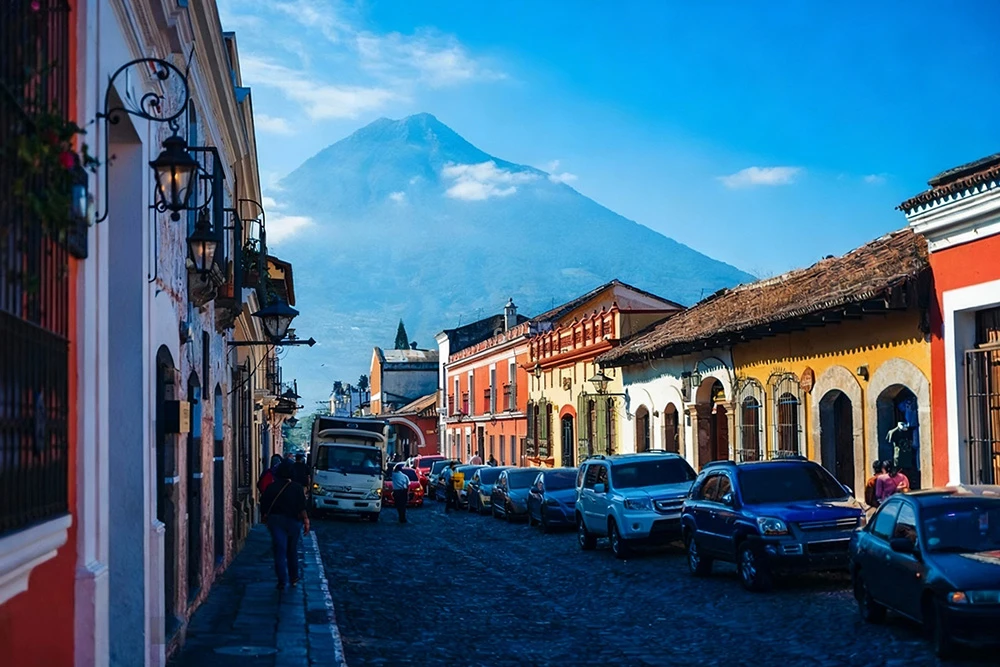
Where spring lingers on every day of the year
Morning felt like a kind hello: soft air drifting around 25°C, sun warm but never pushy, a breeze carrying coffee and wet earth. They call it El País de la Eterna Primavera – the Land of Eternal Spring – and for once the slogan doesn’t exaggerate. Just beyond the hills, neighboring coasts sweat under tropical heat, but up here the air stays gentle, like it knows how to take care of you.
By afternoon, you can stroll in sleeves without watching the sky for mercy; shade invites a light scarf, sunshine suggests an ice cream. In Guatemala, the altitude keeps the days balanced, like a favorite song looping at the right volume. People seem to move to that tempo – conversations stretch, market colors glow without wilting, and time loosens its grip a little.
I remember purple petals drifting across my lap and realizing how easy it felt to simply be. “Eternal spring” sounds grand, but it feels more intimate than that: a quiet permission to linger, breathe, and let your shoulders drop, as if the weather itself were saying, you’re okay here, no rush.

The market where every color has meaning
I remember pausing at a stall, a little dizzy from the flood of crimson, indigo, and sun bright yellow. For a moment I thought it was all just beauty, and then the noise of bargaining, the sweet breath of fruit, and the smoke of incense seemed to lean in as if to say, you’re missing something. The cloth felt warm in my hands, dense with wool and patience.
In Chichicastenango, weaving isn’t decoration so much as conversation. Threads on backstrap looms carry what elders have taught for generations, and patterns do practical work: the village you call home, whether you’re married, the clan that claims you – a map stitched into cloth. Even the smallest border holds a quiet decision, a word you may not hear unless you’re listening for it.
I loved that identity could rest on your shoulders, ordinary and proud at the same time. It made me softer toward what people wear without saying, the meanings we carry in plain sight. Walking away, I kept thinking how easy it is to mistake color for noise, and how peaceful it feels to realize it’s actually a language, spoken slowly, one patient thread at a time.
The Maya didn’t vanish – voices still carry.
What surprised me most wasn’t the temples, it was the sound of the plaza: greetings tumbling in a Maya tongue, a price whispered back, and then the familiar swing to Spanish. The air smelled of griddled corn and woodsmoke, marimba notes somewhere in the shade, and every voice seemed to braid into the next like threads in a huipil. I remember standing still for a moment, just listening, feeling how the present carried the past without fanfare.
People like to say the Maya disappeared, but here in Guatemala they’re the neighbors and shopkeepers – nearly half the country, each community with its own tongue. There are more than twenty of them, from K’iche’ to Q’eqchi’, and you hear them daily in jokes, market haggling, lullabies, even as Spanish remains the official voice. It’s the kind of truth that quietly rearranges your sense of time; I left feeling that a place can hold many heartbeats at once.

A million dollar stamp in a WhatsApp world
I almost laughed when I learned a postage stamp once sold for over a million dollars the 1871 blue El Quetzal, from Guatemala. It’s such a delicate thing, ink blue and featherlight, the kind of square you’d tuck under a fingertip and nearly forget. The idea felt absurd and lovely at once, a small treasure hiding in the corner of a page.
What gets me is the irony: hardly anyone sends letters anymore. The gossip hums in WhatsApp groups now the cheerful pings, aunties firing off voice notes, friends trading jokes before the bus even pulls away. That old stamp feels like a blue feather pressed into paper, a reminder of the slow, careful way news once touched a heart.
Maybe that’s why the story sticks with me. Our messages now dart like hummingbirds between screens, fast and bright, while real worth often sits quietly in things we almost overlook. A tiny square once sent letters across oceans, and even today it nudges me to believe that patience, care, and a little beauty can still travel far.
Drunken horse races to charm the restless dead
Marimbas clatter like wooden rain, and the street swells with laughter and the sweet sting of corn liquor. Horses prance, eyes wide, as riders sway and grin, daring the afternoon to blink first. I remember feeling both nervous and giddy, dust on my tongue, as the town let its heartbeat run wild.
No one’s chasing a trophy here in Todos Santos Cuchumatán. They ride to amuse the spirits, to make the unseen smile and go easy on the living an annual truce signed with hooves and music. Someone told me the dead get bored, and I believed it; you can almost sense them leaning in like curious neighbors at the doorway. It’s chaotic, yes, but tender too: a community keeping fear at bay with noise, color, and a little foolish courage, reminding the world that love can be louder than haunting.

Gold and secrets in Zone 1’s lost tunnels
It’s funny how a city keeps its truest stories underground. Above, the bells ring and buses exhale, and you could swear it’s all surface life. But in Guatemala City’s Zone 1, people whisper about tunnels where gold and political secrets were tucked away during coups quiet vaults under the clatter. Some say they run between cathedrals and government buildings, as if the two were never far apart, and the maps that once traced them have “gone missing” like a memory you pretend not to have.
I remember the scent of candle wax drifting out of a doorway and a cool breath slipping up from a street grate, like the ground was sighing. Someone told me their grandfather swore there were doors beneath the pews and trapways under office floors. The idea made me ache a little those threads tying faith and power in the dark because it means the city’s history didn’t just happen in plazas, it also survived in rooms where no one was meant to speak.
What I love is how the rumor clings to daily life: vendors selling sliced mango, radios playing soft cumbia, and beneath it all the hush of a hidden past. Maybe the maps vanished because the city learned to live forward, not backward. Still, when the afternoon heat settles and the streets grow drowsy, you can feel it the gold, the secrets, the stubborn heart of a place that knows how to keep what matters safe until it’s ready to be told.
The marimba’s journey from devil’s xylophone to celebration heartbeat
I still hear the first cascade I ever felt from a marimba soft wooden notes tumbling like warm rain on stone. The air smelled of candles and orange peel, and the courtyard swayed; hands loosened, shoulders melted, and even the shy uncle started humming. The sound rolled on, a small river of rhythm stitching people a little closer.
Later someone told me priests once banned it, calling it the “devil’s xylophone,” and I laughed at how wrong fear can be. In Guatemala, those warm wooden notes now lead weddings and wild, bright fiestas, rolling through patios and plazas, and people loosen into easy smiles. It makes you believe some sounds belong so deeply here that they find their way back, every single time.
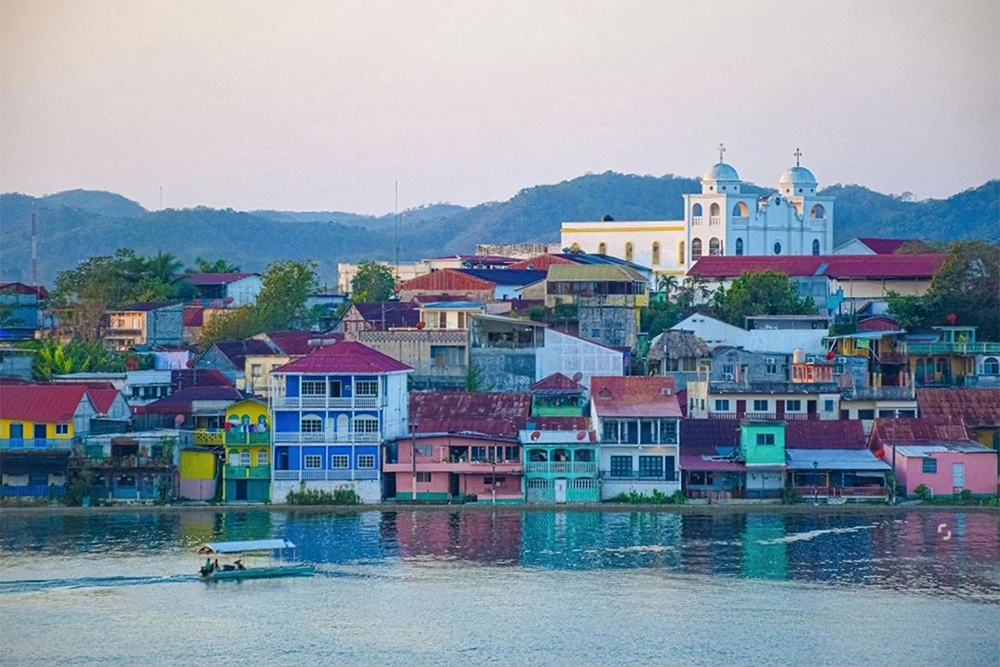
When chocolate flowed from the town’s fountains
I laughed softly when I first heard it: during royal festivals in colonial days, the plaza fountains didn’t pour water at all they ran with chocolate. People say the cocoa scent hung in the air for days, a warm, bittersweet hush that slipped into courtyards and clung to cobblestones, the aroma wrapping the streets like a shawl.
I love the thought of a city choosing sweetness as its language, turning celebration into something everyone could breathe. A shopkeeper once told me the whole town became a confectioner’s paradise, and I believed her; there’s a kindness in that image bells pealing, bougainvillea trembling, and the cocoa in the air making strangers smile like old friends. Maybe that’s why Antigua feels so welcoming, the memory of those festivals lingering the way scents do, long after the music fades.

Volcano fed beans and blessings in the highlands
Some mornings there, the air smells of woodsmoke and toasted sweetness, and the fields keep a gentle hush. Near Antigua, the soil is dark and gritty, volcanic and generous; the volcanoes sit in the distance like sleeping giants, feeding the roots with old fire. You can taste that quiet power in the cup no surprise people call this some of the best coffee in the world.
What stayed with me wasn’t just the flavor, but the way the first harvest is still greeted incense curling into the morning, soft prayers murmured over baskets of red cherries. A small offering, they say, to the gods and to caffeine addicts everywhere, a reminder that before the rush there is gratitude. Maybe that’s why each sip lands steady and kind, like a small sunrise you can hold.
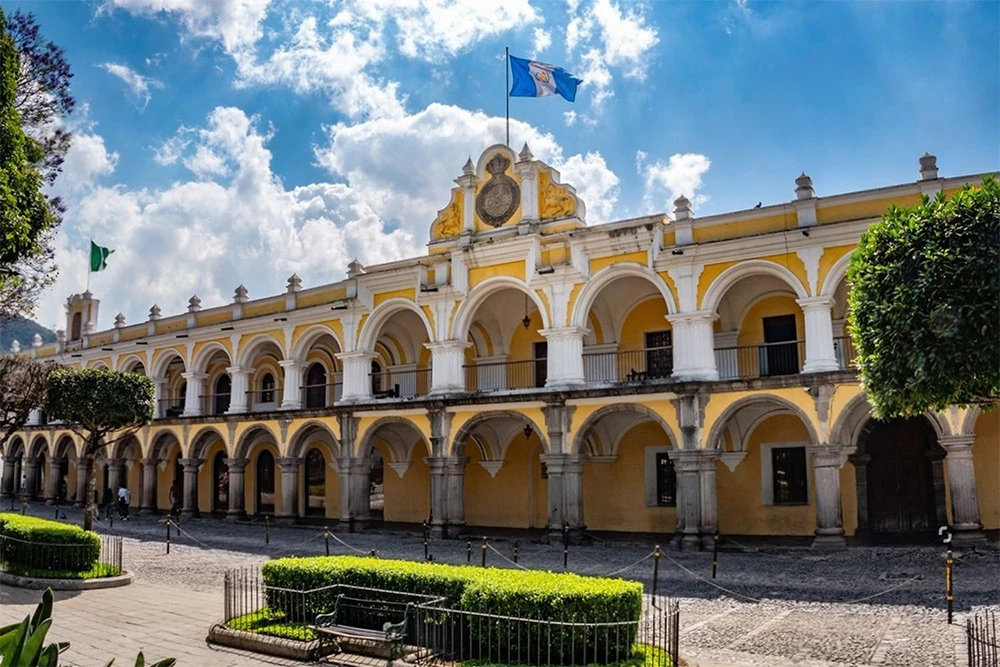
Brotherhoods hide old gods behind church saints
You notice it first in the hush that feels both tender and mischievous, as if the church were breathing two languages at once. In Santiago Atitlán, the cofradías the old sacred brotherhoods still keep their watch, cradling carved Maya idols in back rooms and behind the smiling saints on the altar. It’s spoken about softly, not as defiance but as care, the way a family keeps something precious out of the sun.
At night the air thickens with wax and copal, a sweetness of rum threading through hymn after hymn. The men stay awake until the candles turn stubby, tending an all night feast where rosaries click and laughter warms the room; Catholic on the surface, Maya underneath, the whole thing layered like a palimpsest of faith. I remember feeling how right it seemed that devotion could wear more than one face, and still be one heartbeat.
What surprised me wasn’t the secrecy, but the tenderness the sense that gods and grandparents were being looked after in the same gesture. It left me thinking about the quiet ways people protect what carries them, not by hiding it away, but by keeping it close, safe behind the saints until morning.
Rum for the Spirits Beneath New Homes
I remember the sweetness of rum drifting up from fresh sawn boards, someone laughing softly about feeding the ground before the house feeds us. Around here, when a new home rises, a bottle is tucked under the floor to “feed” the spirits part offering, part thank you, a quiet hello to whatever listens in the dark soil. It’s not about fear so much as courtesy, like leaving an extra seat at the table for the guest you can’t see. Pine dust, wet clay, and that sugary scent make the room feel older than it is.
In Antigua, I was told a grandmother never skipped this step because gratitude keeps a house steady in more ways than one. I love how small it is: before keys jingle and cupboards fill, there’s a quiet toast with the earth below, a promise to live lightly on it. Somehow it makes the floors kinder underfoot and the nights less lonely, as if the place recognizes you back.
Shoes at the summit, life reshapes on the way down
I remember laughing the first time I heard it: leave your shoes at the top and something will shift before you lace them again. It sounds like a dare wrapped in a blessing. Up high, the air smells faintly of sulfur and sun warmed rock, wind tugging at loose laces as if the mountain wants a keepsake. Maybe it’s just folklore, but it has a way of sneaking into your thoughts, the way heat lingers on skin long after the fire is out.
On Hawaii’s Big Island, the ground feels awake warm stones like small heartbeats beneath your feet, vents breathing in soft sighs. People talk about the volcano as if it knows you, and you start to believe it; not with certainty, but with a quiet trust that the earth can loosen what you’ve been gripping too tightly. The ritual isn’t really about shoes; it’s about letting the mountain pick the knot in your day, a quiet locksmith testing the tumblers until something gives.
Once, up there, a decision that had clattered around my head for months finally settled into place, like ash drifting after a gust. I walked away feeling oddly lighter, not because anything dramatic happened, but because the land made space for an answer to arrive. Maybe that’s the magic coming back to the same shoes and realizing your footsteps won’t be.

Final thought
In the end, it’s the small, human moments that reveal the soul of Guatemala – the warmth of a shared meal, the colors that seem to hum in the sunlight, the gentle rhythm of voices carrying through the hills. Beneath its layers of history and beauty, there’s a spirit that feels both ancient and endlessly new. Guatemala moves at the pace of the heart, quiet yet full of life. And when you leave, it doesn’t let you go – it lingers softly, like the echo of a song you never want to forget.



